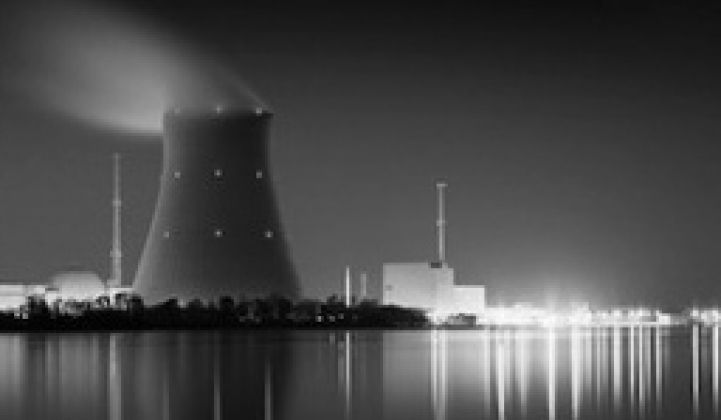On Saturday, I saw Pandora’s Promise -- the new film promoting nuclear power largely through interviews with environmentalists who have embraced it -- and I participated in a post-screening discussion with Michael Shellenberger of The Breakthrough Institute. Michael is one of the five converts featured in the movie. First, let me say that I’m no movie critic, but this is a very polished and professional film. Though I didn’t agree with all of it, I was engaged throughout the movie.
On the subject matter, I was surprised at the very narrow bite of the nuclear power issue that the movie takes. It is basically a movie about nuclear power’s past safety record and waste management.
On that score, it is fairly convincing. Nuclear power actually has an impressive safety history, particularly compared to fossil fuel extraction, processing and combustion. The movie revisits Three Mile Island, Chernobyl, and Fukushima in detail -- maybe a bit too much detail. The point that there was far less harm to humans than most people think is well worth making, as is the fact that the number of deaths from even Chernobyl is almost certainly smaller than the number of deaths caused by coal mining and burning every year.
But I couldn’t help thinking that the focus on these three events misses the real issues.These were all about 40-year-old reactors, built to a standard that no one would consider using today. Chernobyl didn’t even have a containment vessel. New nuclear plants are being built with much greater attention to prevention and containment. Looking at those accidents in a discussion of building new reactors is like looking at 1960s cars with no seatbelts (let alone airbags) to figure out the safety of driving today.
That said, the movie can’t seem to stop itself from finding the flimsiest of straw men to attack in terms of past accidents. In this case, it’s anti-nuclear activist Helen Caldicott, who is shown claiming that Chernobyl caused a million deaths, despite the fact that no serious research has indicated a figure above the low thousands. The film succeeds in making clear that there is a group of people who are anti-nuclear for reasons, and in ways, that are every bit as insular and anti-science as climate change deniers.
What left me less than completely persuaded on safety is the fact that there are far more thoughtful critics and reasoned concerns about nuclear power safety, including the issue of terrorists' access to plants and to fuels. This is particularly true if we are talking about building plants in countries with less stable governments, as the movie suggests we should. The movie says only a bit about nuclear proliferation among national governments and essentially nothing about terrorism. Those concerns also may not pass a close analysis either, but focusing on the most outlandish characters and extreme statements undermines the film’s seriousness (though it probably makes it more engaging than a movie that reviews the academic research on nuclear safety. But if you are interested in that sort of thing, there are recent Energy Institute papers on efficiency improvements, safety, and the prognosis for nuclear power post-Fukushima).
My disappointment with the film is that beyond safety, it has little to say. There are two fleeting references to cost that suggest vaguely that nuclear is cost-competitive. It isn’t. In the discussion after the movie, Michael Shellenberger agreed with me that nuclear power can’t beat coal or natural gas today. The movie briefly beats up solar and wind for being intermittent, but that segment lasts probably less than a minute and there is no reference to storage possibilities or demand adjustment to address intermittency.
In the end, I came away realizing that I wasn’t the movie’s target audience. It is aimed at people who still want to oppose nuclear power based on the risk of a technical failure and massive meltdown. I’m not sure how many of those people there are, but like the converts in the movie, it would be useful for them to revisit the research on past events.
As for policy going forward, I think the post-screening discussion made clear that Michael and I are pretty much on the same page. I believe he (as well, I hope, as Stewart Brand, the most famous of the movie’s five converts) would agree that:
- Nuclear power should not be eliminated as an option due its past safety record.
- Nuclear power is currently still much more expensive than coal or gas.
- Nuclear power should be one of the many technologies we need to keep researching to find some alternative that is low-carbon and can be cheap enough to be attractive to the developing world.
- That list should also include solar, wind, geothermal, carbon sequestration and storage.
For a far more entertaining non-review of the movie (he hasn’t seen it) and a thoughtful discussion of nuclear power issues, I recommend David Roberts’ column on Grist.
***
Reprinted with permission from the Energy Economics Exchange. Professor Severin Borenstein is co-director of the Energy Institute at Haas, University of California, Berkeley’s Haas School of Business and director of the UC Energy Institute.



